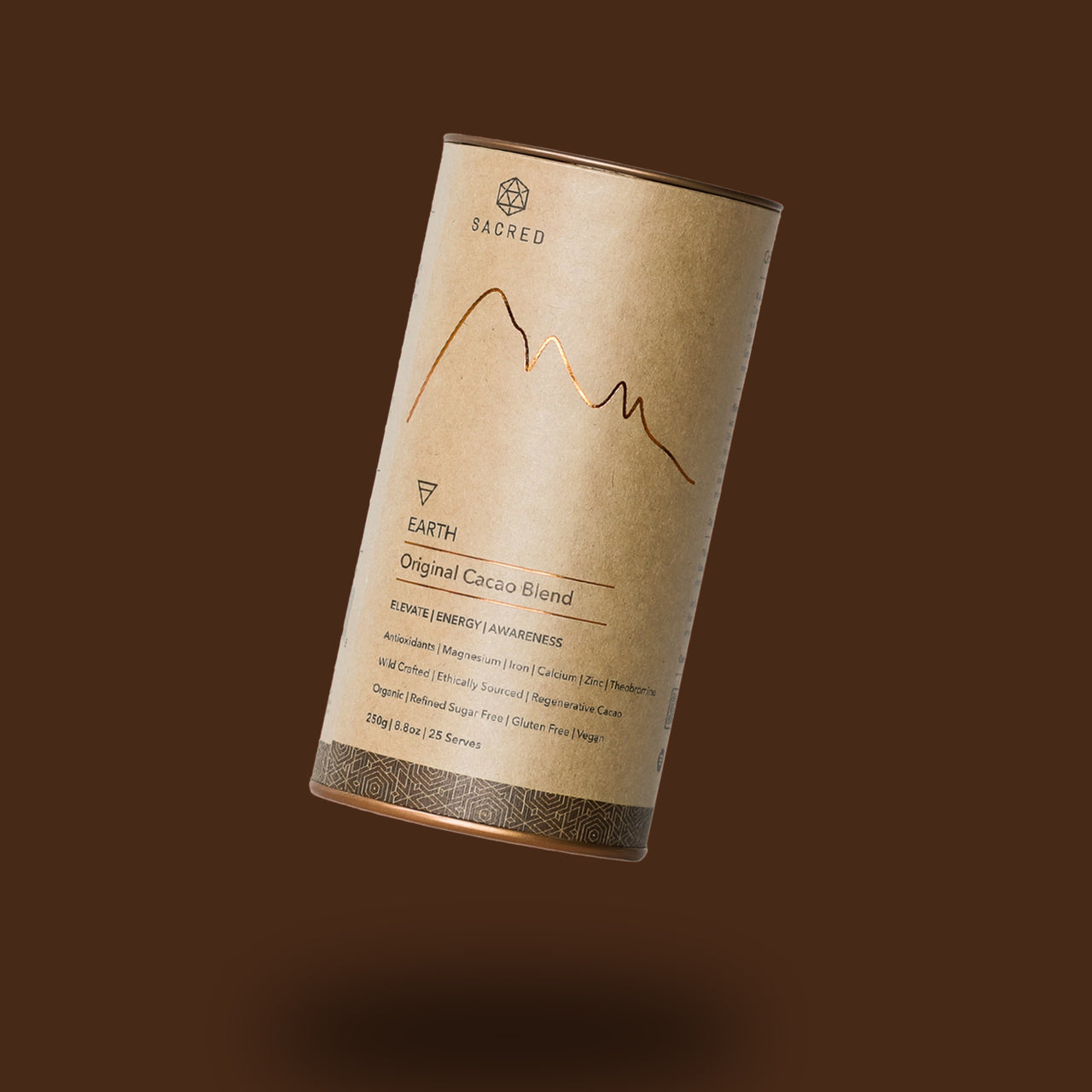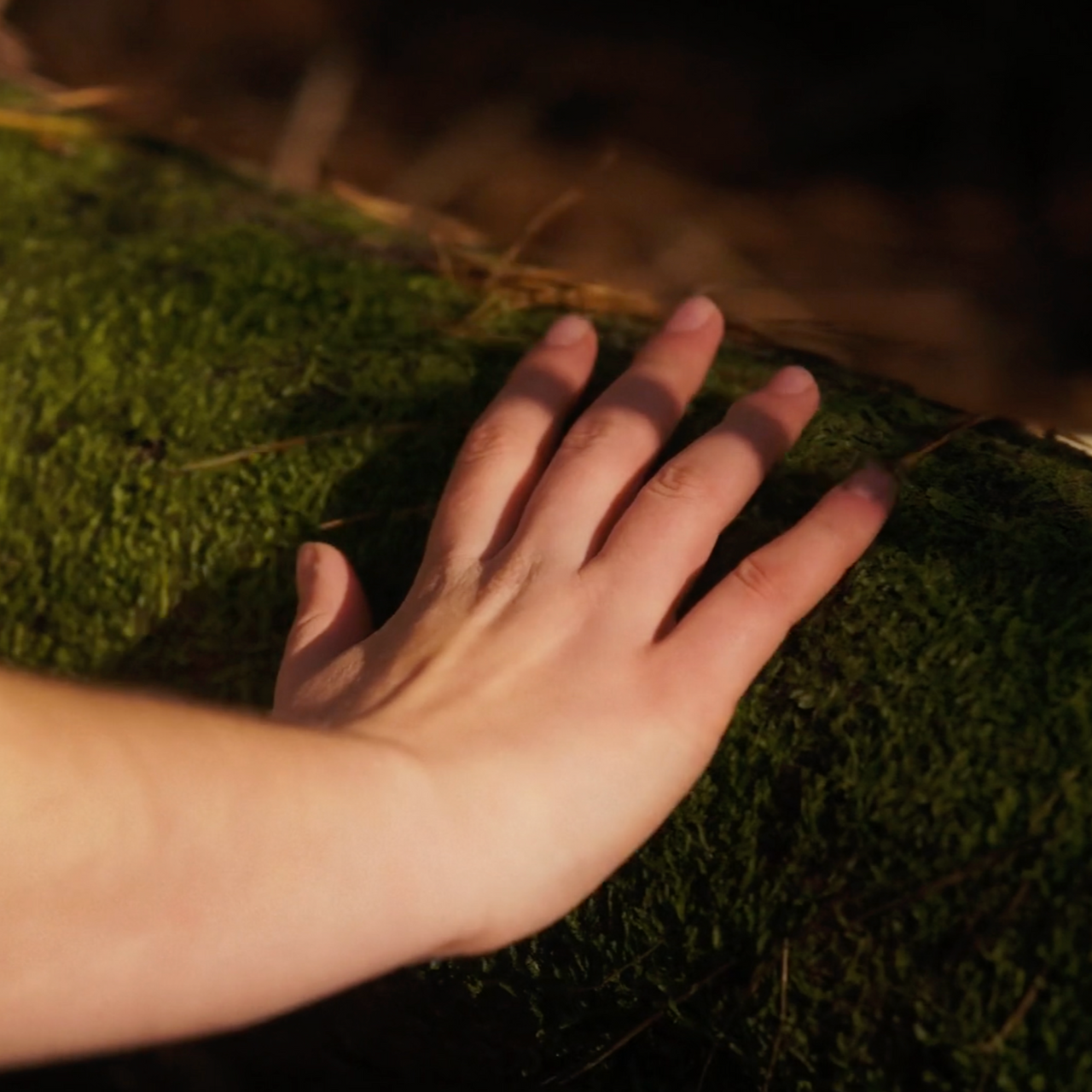
Chocolate: a comforting indulgence that has warmed hearts for centuries, from the first Mayan sip to the Cadbury bar you grab during your weekly grocery shop. But, as we dive deeper into the cacao crisis, the future of chocolate seems to be in peril. The beloved sweet treat we all know and love is facing significant upheaval, and it’s not just about rising prices. The very foundation of chocolate—the cacao bean—is under threat. Farmers, environmentalists, and even chocolate manufacturers are scrambling to deal with a perfect storm of issues that could reshape the chocolate industry forever.
But is this truly the end of chocolate? Or is it simply a challenging, yet transformative, chapter for an industry that’s been around for millennia? In this blog, we’ll explore the complex causes of the cacao crisis, the impact on the future of chocolate, and how the industry is adapting. So, let’s get stuck into it.
The Cacao Crisis: An Industry At A Crossroads
For those of us who love chocolate, hearing the term "Cacao Crisis" can be as alarming as the first sign of rain on your picnic day. The truth is, this crisis is a multifaceted issue—environmental, economic, and ethical—and it’s shaking up everything from the price at checkout to the very sustainability of cacao farming.
Let’s break it down and take a closer look at what’s causing all the fuss.
What Is The Cacao Crisis?
The cacao crisis isn’t just a fleeting trend or a buzzword used by industry insiders. It’s a real, growing concern for the global chocolate supply chain, and it’s already impacting the way we enjoy chocolate. Imagine waking up to find your local store’s shelves barren of your favourite chocolate bars, or worse, seeing the price of a block soar through the roof. That’s the kind of future many are bracing for, and it all begins with the bean.
At the heart of the crisis are several interconnected factors that have been quietly brewing for years. Climate change, disease, poor farmer conditions, and market volatility have come together in what’s being described as a perfect storm for cacao. Farmers in West Africa—home to the majority of the world’s cacao production—are grappling with extreme weather, declining crop yields, and mounting economic pressure.
Climate Change And Its Impact On Cocoa Harvests
Let’s talk about the weather—because when it comes to cacao, it’s not just the rain that matters; it’s the timing of it. Cacao trees thrive in specific conditions—steady rainfall, warm temperatures, and a balanced dry season. But the changing climate is throwing those once-predictable patterns into disarray. In countries like Ivory Coast and Ghana, where cacao has been the backbone of the economy for decades, farmers are seeing extreme weather events that can decimate an entire harvest.
Consider this scenario: A farmer in Ghana has spent months nurturing his cacao trees, only for an unexpected dry spell followed by a torrential downpour to ruin the crop. With temperatures rising beyond optimal levels—like the 32°C mark exceeded in 71% of cacao-growing regions in 2024—the trees are stressed and unable to produce the high-quality beans needed for chocolate production.
Scientists predict that by 2050, up to 50% of the currently suitable cacao-growing land in West and Central Africa could become uninhabitable for cacao trees. The future doesn’t look great, but these communities are at the frontline, and they’re facing the brunt of the environmental changes.
Widespread Diseases And Aging Cocoa Trees
But the weather isn’t the only factor at play. Cacao trees, like all living things, are subject to pests and diseases. The cocoa swollen shoot virus (CSSV) and Black Pod Disease are causing havoc in major producing regions, making what’s already a challenging environment even more difficult for farmers.
In Ghana, where the Western North region produces a significant portion of the country’s cacao, CSSV has infected over 81% of the region, wiping out hundreds of thousands of hectares. There’s no chemical treatment for CSSV, and the best course of action often involves cutting down infected trees, leaving farmers with fewer resources and more lost potential.
What’s even more troubling is the age of many cacao trees. West Africa’s cacao farms are filled with aging trees that aren’t producing as much as they once did. Some trees are decades old, and their productivity is steadily declining. The underinvestment in replanting is a major issue, as farmers can’t afford to replace the trees at the rate needed to meet global demand.
This confluence of aging trees, diseases, and climate challenges is leaving cacao producers with fewer viable crops and less money to reinvest in their operations, creating a vicious cycle of declining productivity and growing financial insecurity.

Key Drivers Of The Cacao Crisis
The cacao crisis isn’t just about environmental factors; the industry is facing significant economic pressures and ethical challenges. While climate change and diseases are devastating crops, other factors like poverty, exploitation, and deforestation are exacerbating the situation. Let’s take a closer look at how these issues are influencing the future of chocolate and cacao production.
Farmer Poverty And The Ethical Dilemma
For many cocoa farmers, the dream of a prosperous future from their cacao trees is fading fast. The reality is that most cocoa farmers in West Africa live below the poverty line, earning less than $1 a day. This isn’t a new issue—it’s been ongoing for decades. But as the global demand for chocolate continues to rise, farmers are seeing less of the profit from their labour.
Imagine a farmer in Ivory Coast who works long hours in his cocoa field, only to receive a fraction of the price set by global chocolate manufacturers. The price is often fixed by governments based on last year’s sales, which means they’re getting far less than the market value for their beans. This leaves them with little incentive to invest in sustainable farming practices, further exacerbating the environmental issues facing the industry.
This lack of financial security also leads farmers to make difficult choices, like selling land for illegal mining operations. In some areas, the lucrative gold mining industry is drawing farmers away from cocoa cultivation, leaving the land barren and unusable for future cacao crops. On top of this, child labour remains a significant issue. According to estimates, around 1.6 million children are working on cocoa farms in Ghana and Ivory Coast, often in dangerous conditions that stunt their development and perpetuate the cycle of poverty.
Deforestation, Illegal Mining, And Land Use
Deforestation has been a longstanding problem linked to cacao production. From 2000 to 2019, 2.4 million hectares of forest were cleared in Ivory Coast to make way for cocoa plantations. This deforestation doesn’t just impact the environment; it also accelerates climate change, making cacao production even more difficult in the long run.
Illegal mining is a growing concern, especially in Ghana. Farmers, lured by the potential for high profits, are turning to illegal gold mining, which is rapidly destroying cacao-producing land. This mining also poisons the soil, rendering it unfit for agriculture. For a farmer trying to make ends meet, this may seem like a quick fix, but it’s further undermining the future of cacao farming.
The deforestation and land degradation linked to cacao production are not just environmental issues—they’re deeply tied to the livelihoods of farmers who have limited choices for income. When faced with the option of farming cacao or mining gold, many take the risk of leaving behind their cacao fields, creating a vicious cycle of environmental damage and economic instability.
Market Volatility And Speculation
The price of cacao has been volatile for years, but it has reached new heights in recent times. In December 2024, New York futures contracts for cacao hit a high of $12,565 per metric tonne, nearly three times the average price seen since the 1980s. While this might seem like a win for farmers, the reality is more complicated.
For many cocoa farmers, this surge in prices doesn’t translate into increased income. Government-set prices, which are often based on previous years’ sales, leave farmers with much less than what they should be getting. Meanwhile, the global market is being influenced by speculative trading and limited liquidity, which means that market fluctuations are making cacao prices even more unpredictable.
The volatility of the cacao market is further exacerbated by hedge funds exiting the futures market in early 2024, adding more uncertainty to an already unstable industry. For farmers, this means even less control over the prices they receive for their crops. They are caught in a web of global market forces that they have little influence over, leaving them vulnerable to financial exploitation.
The Role Of New Regulations In The Cacao Crisis
As if things weren’t complicated enough, the European Union’s new Deforestation Regulation (EUDR) is adding further challenges for cocoa producers and exporters. Under the regulation, cocoa cannot be placed on the EU market if it is linked to land that has been recently deforested.
For West African producers, who have already been grappling with deforestation issues, this regulation will be a game-changer. It will introduce additional layers of complexity and cost to the supply chain, further pressuring an industry already under strain. Farmers in regions where deforestation is widespread will find it harder to compete, as the regulation increases the need for traceability and certification of sustainable practices.
The regulation also has implications for Australian cocoa exporters. Even though Australia is regarded as a low-risk country, exporters will still need to demonstrate traceability and compliance in order to maintain access to the EU market.
While the regulation is an important step towards reducing global deforestation, it also highlights the fragility of the cocoa supply chain. Farmers and exporters are once again caught between global regulations and market demands that are increasingly difficult to navigate.
How The Chocolate Industry Is Adapting?

The cacao crisis is not signalling the end of chocolate, but it is pushing the industry to evolve. Manufacturers are adapting to the challenges in creative and sometimes unexpected ways. From shrinking product sizes to developing cocoa-free alternatives, the industry is responding with innovation, sustainability initiatives, and a focus on ethical sourcing.
Soaring Prices For Consumers
We’re already feeling the impact of the cacao crisis at checkout. Retail chocolate prices have spiked in recent years, and the surge is not likely to slow down anytime soon. In the last two years alone, chocolate prices have risen by 17%, and the situation is getting worse.
Take, for example, the price hikes seen around Valentine’s Day in the US. Retail chocolate prices were 20% higher than the previous year, and some products, like a Twix white chocolate Easter egg in the UK, saw an astonishing 47% increase. Analysts predict that chocolate prices could continue to rise by as much as 30% in 2025, as manufacturers pass on the rising costs of cacao to consumers.
It’s clear that the beloved treat is becoming a luxury for many, and the reality of higher prices is likely to shape consumer behaviour moving forward.
Manufacturer Strategies:
So, what is the chocolate industry doing in response? Here are some of the key strategies that manufacturers are using to adapt to the rising costs of cacao:
Shrinkflation
You’ve probably noticed it: the chocolate bar that once weighed 100g now weighs 85g, but the price remains the same—or worse, higher. This is shrinkflation in action. Companies are reducing product sizes to manage soaring cacao costs while keeping the price points familiar to consumers.
Take a step into the chocolate aisle, and it’s easy to spot the effects of shrinkflation. Less chocolate for the same price means manufacturers are absorbing some of the costs, but the consumer still feels the sting of higher prices.
Cocoa Reduction And Ingredient Substitution
Some manufacturers are experimenting with cocoa reduction—reducing the quantity of cacao in chocolate products to cut costs. The result? You might end up with a chocolate bar that feels less chocolaty, but still satisfies the craving.
Additionally, many companies are turning to ingredient substitutions, such as using alternative fats like palm oil in place of cocoa butter. This can make products cheaper to produce, but it’s not without its trade-offs. For example, the texture and taste of the final product might differ from what we’ve come to expect from traditional chocolate.
Take Japan’s largest confectionery manufacturer, for example. Meiji has changed the ingredient specifications for some of its chocolates, resulting in “quasi-chocolate” products. These chocolates now contain less cocoa butter and more alternative fats, all in an effort to reduce production costs.
Innovative Cocoa Alternatives
In response to the cacao crisis, several companies and startups are developing cocoa-free chocolate alternatives. These products are made using ingredients like oats, sunflower seeds, grape seeds, shea kernel oil, carob, barley, and fava beans.
While these alternatives might not be “true” chocolate in the traditional sense, they aim to mimic the texture and taste of chocolate while addressing the cacao shortage. Some even contain mood-boosting compounds like theobromine from date seeds, providing a similar experience to chocolate without the dependence on cacao beans.
As innovation continues, cocoa-free products might carve out a niche market, appealing to consumers who are more health-conscious or environmentally aware.
Product Diversification
In an effort to reduce reliance on cacao, product diversification is becoming a key strategy for many chocolate manufacturers. Confectioners are branching out into non-chocolate products like candies, gummies, and even jelly beans.
By diversifying their product lines, manufacturers can buffer themselves against the volatility of the cacao market. This allows them to maintain a presence in the snack aisle while reducing their exposure to the risks associated with cacao supply shortages.
R&D In Biotechnology
The future of cacao production may lie in biotechnology. Companies are increasingly investing in biotechnology to develop lab-grown, bio-identical ingredients. These innovations could make it possible to create resilient cacao crops that can withstand the challenges posed by climate change, pests, and diseases.
In addition, gene-editing techniques are being explored to enhance cacao trees' resistance to diseases and extreme weather. While these technologies are still in the experimental stages, they could play a pivotal role in securing the future of cacao farming.
Focus On Sustainability And Ethical Sourcing
The cacao crisis has shone a spotlight on the need for more sustainable and ethical sourcing practices in the chocolate industry. Companies are realising that the long-term sustainability of chocolate depends on the well-being of the farmers who grow the cacao and the environment that supports cacao production.
Fairtrade certification, for example, aims to ensure that farmers receive a fair price for their cacao. Programs like these not only help farmers earn a living wage but also support environmental sustainability by encouraging eco-friendly farming practices.
In addition, companies are stepping up their efforts to combat child labour and improve working conditions on cocoa farms. Colruyt Group, for instance, has committed to paying a Living Income Reference Price to cocoa producers for their Boni chocolate bar range, going above and beyond standard certification requirements.
Consumer Behavior And Shifting Preferences
Consumer awareness of the cacao crisis is growing, and shoppers are starting to make more informed choices about their chocolate purchases. According to a March 2025 survey, over half of consumers were unaware of the cacao shortage before, but many now understand the rising prices.
With that knowledge, consumers are adjusting their purchasing habits. Some are buying less chocolate (33%), others are actively seeking promotions (43%), and some are switching to less expensive brands (31%). Interestingly, while chocolate demand is generally inelastic, meaning it doesn’t drop significantly with price hikes, these shifts are clear signs that consumers are becoming more price-sensitive.
Transparency about price increases is crucial, as 60% of consumers want to understand the reasons behind rising costs. This trend shows that consumers are increasingly motivated by both the price tag and the ethical practices of the brands they support.
While the cacao crisis is undoubtedly shaking the foundations of the chocolate industry, it is far from signalling the end of chocolate. The challenges—climate change, disease, farmer poverty, and deforestation—are real and need urgent attention. However, the chocolate industry is adapting in creative and innovative ways. From shrinking product sizes to the development of cocoa-free alternatives, manufacturers are finding new ways to navigate the turmoil. Sustainability and ethical sourcing are becoming more prominent, ensuring that the industry isn’t just focused on the immediate challenges but is working towards long-term solutions for both farmers and consumers.
In short, chocolate as we know it will likely transform—becoming more expensive, smaller, and potentially more sustainable. But rest assured, chocolate isn’t going anywhere. It’s evolving, and its future is still very much alive.
















